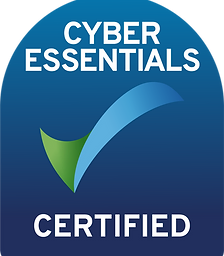Empowering people is one of the laudable aims of the NHS Long Term Plan. These transformational strategies have been boosted by the COVID-19 pandemic which sees us increasingly connecting with our healthcare providers through video consultations and even texts. Online tools now provide us with a route to link directly with health clinicians and administrators, uploading photos, describing symptoms and requesting medication.
I am all for digital transformation. As a privacy professional, I truly believe that having access to information about me, understanding and being involved in decisions about me and having the ability to challenge and correct data are part of my autonomy and a fundamental element of my human rights, at least for the moment.
As citizens, having our data processed by the state, we are more vulnerable and less able to express authentic desires and make choices. Digital empowerment demonstrates that the state are discharging their positive duties to encourage autonomy and co-production. This allows me to exercise at least some control.
But giving me power and control brings darker opportunities for the power and control of others. Not just for faceless scammers and hackers in some basement somewhere, or even an increasingly paternalistic state, harnessing big data to erode personal liberty. But in our homes.

Many people, including me, have some experience of a toxic, controlling or abusive relationship. It is far too common and the numbers vastly increased during lockdown. Healthcare providers are one of the critical routes by which a victim of domestic abuse might find a safe space to seek help and advice. Under the cover of routine smear exams or vaccination appointments for children, a victim can make subtle or overt disclosures that could help them start the long road to leaving the relationship.
Women’s Aid highlight studies demonstrating that perpetrators weaponize digital technology to further control the victim.
Common abusive behaviours used in coercive control included “…use of technology (such as phone trackers, controlling social media usage, barrage of text messages or monitoring phone usage) (Barlow et al, 2018)”
So, thinking about the upcoming 1st November ‘switch on’ for online access to health records gives me some concern. The service will allow new items added to the health record such as letters and consultation notes to be immediately visible to patients who have set up an account.
For most of us, it will be a useful and empowering tool, allowing us to review what was discussed in what can sometime be a rather rushed consultation with time-pressured healthcare professional. Already we are seeing early adopter sites confirming a reduction in administrative burden for practices.
For others, it could further narrow the options for safe spaces in which to seek help. Professionals are being trained on how to ‘hide from view’ any records that might be harmful if released via online access. Healthcare providers are provided with training to identify and support with domestic abuse, but what if professionals are not aware of the presence of a perpetrator in the life of the patient. They will not necessarily know that the perpetrator has taken control of the patient’s logins to further monitor their whereabouts and what is being said.

If a victim wanted to attend a routine consultation, they might previously have been able to do so discretely. Now, the fact that I attended an appointment at all (even without any disclosures) has the potential to become known to the abuser and place the patient at greater risk.
Medications may not be routinely hidden, with the administrative staff assuming that there are no particular concerns with release to the patient. This increases the risk of reproductive control by an abuser, blocking their ability to discretely obtain contraception and gain control of their bodies.
I am not a domestic abuse expert or a clinician, but the potential for harm here appears significant.
In the coming years, the plan is to further open up online access to historic records. This may include records of pregnancy terminations or records noting that the patient is seeking to leave the relationship.
Whilst technology serves and empowers the vast majority, weaponisation of digital technology has the potential to further isolate and harm the most vulnerable among us.


